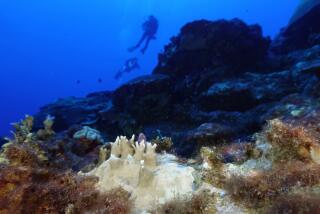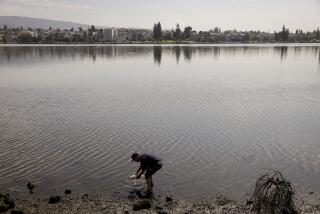In science, words matter
Words matter. Take the term “red tide,” which is the popularized way of talking about blooms of harmful marine algae. This common terminology is a misnomer because the blooms are not always red and their movement is largely unrelated to tides. Also, many species of algae that cause red discoloration are not harmful.
I am a biological oceanographer, so naturally I focus on my own discipline. But I worry that throughout the sciences we are using inaccurate terminology to describe serious environmental issues. Though catchy names do grab public attention, they are often misleading and likely to feed troublesome misconceptions in a public unfamiliar with the complexity of the issues.
To take another example from my field, let’s consider the “great Pacific garbage patch.” The term “garbage patch” leads many people to believe that a visible blanket of trash and other debris covers the ocean surface somewhere in the middle of the North Pacific. This is not true. The majority of the debris is small plastic pieces (often microscopic) that are suspended in the water column. This type of garbage — or more accurately, pollution — is not visible from plane or satellite images or even always from boats.
The popularized term “garbage patch” misrepresents the complexity of the problem. Garbage sounds like something that can be simply collected and disposed of. But the widespread and dispersed nature of the problem makes any cleanup effort extremely difficult. Experts are still unsure how to tackle it. The only credible solution in the long run is to stop plastic waste from entering the ocean, which would take both public policy shifts and widespread education efforts. I do not believe the term “garbage patch” conveys this crucial message.
Back to “red tide.” This term suggests something highly visible, but some of the biggest hazards associated with some harmful algal blooms — domoic acid, which addles the brains of marine mammals, and paralytic shellfish poisoning, which can harm people who eat contaminated shellfish — are not visible. Many algal toxins accumulate in the tissues of fish and shellfish over time, resulting in prolonged or delayed toxicity long after the bloom has ended. To ensure public health, accurate terminology is essential.
“Global warming” is another example of a not entirely accurate term, and it’s one that has fed skepticism on whether the phenomenon exists. Skeptics often cite extreme weather events or short-term cooling periods as evidence against global warming. But weather (which is short-term, localized and highly variable) is not the same as climate (the long-term average of such things as rainfall and temperature). Still, doubters are quick to cite cool Midwestern weather in August or a winter deep-freeze in Florida to bolster their claims that global warming is “history’s biggest scam.”
In response to this public doubting, there has been a push by climate experts to replace the term “global warming” with the more accurate term “climate change.”
A relatively new issue catching public attention is “ocean acidification.” “Ocean acidification” is a term used to describe changes in seawater chemistry due to increasing amounts of CO2 being taken up by the ocean. When CO2 from the atmosphere dissolves into seawater, a series of chemical reactions occurs that effectively lower seawater pH. But while ocean pH is definitely decreasing, the ocean is not actually becoming acidic — just less basic. The world’s oceans are not predicted to drop below a pH of 7.0 (neutral on the pH scale).
That doesn’t mean we should downplay the severity of changing ocean chemistry. Extensive research has shown that even a slight reduction in pH, down to 7.8 from the current average of about 8.1, could have devastating impacts on marine ecosystems. Many types of organisms, especially those with calcium-carbonate shells like corals and shellfish, will have trouble surviving in lower pH waters. Although it is important that the crucial nature of the issue be translated to the public, we must be careful with terminology.
People don’t like to hear bad news. They’d prefer that the oceans were healthy and that rapid shifts in climate were not occurring. That’s why scientists and the media must avoid hyperbolic language when describing crucial environmental issues. The use of more colorful terms may make for catchier headlines, but the terms can also invite disbelief.
There is a need, of course, to make complex scientific issues understandable to nonscientists. But in trying to do so, we must also be careful to be absolutely accurate in our descriptions.
Elizabeth Tobin is a doctoral candidate in the School of Oceanography at the University of Washington. Her research focuses on improving the prediction of harmful algal blooms.
More to Read
A cure for the common opinion
Get thought-provoking perspectives with our weekly newsletter.
You may occasionally receive promotional content from the Los Angeles Times.










